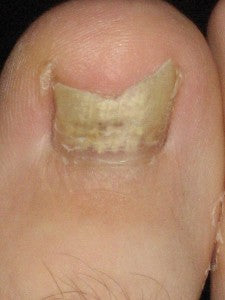As adrenal chronic fatigue and stress are at an all-time high and exist at almost epidemic rates today in westernized society, candida albicans has been targeted as one of the main perpetrators causing these conditions.
 Candidias is is a condition of yeast or fungal overgrowth in the body past normal, healthy amounts. It’s often found in the intestinal or gastrointestinal tract and is characterized by recurrent vaginal or urinary tract infections, oral thrush, digestive complaints, mood swings, cognitive problems, and relentless cravings. It can be caused by our hurried lifestyle, frequent antibiotic and oral contraceptive use, or overconsumption of refined foods and alcohol, just to name a few.
Candidias is is a condition of yeast or fungal overgrowth in the body past normal, healthy amounts. It’s often found in the intestinal or gastrointestinal tract and is characterized by recurrent vaginal or urinary tract infections, oral thrush, digestive complaints, mood swings, cognitive problems, and relentless cravings. It can be caused by our hurried lifestyle, frequent antibiotic and oral contraceptive use, or overconsumption of refined foods and alcohol, just to name a few.
If you suspect candida to be the culprit for your symptoms and have been researching treatments to address this epidemic and often overlooked condition, then you are most likely tired, frustrated, and discouraged, as there is much conflicting information out there as to how to handle this situation.
Here’s a simple, tried and tested, effective three step holistic approach to ridding yourself of excess candida in the body. By addressing the problem of overgrowth, restoring health and a strong nutritional foundation to the body, and restoring proper flora ecology in the gut, energy and vibrancy can be gained once again. Let’s take a look at the three steps in this process.
1. Eliminate offending foods and add candida killers to your diet
A reckless offender, candida thrives on many of the most common foods found in the grocery aisles and on a majority of average Americans’ dinner plates today. In order to avoid this yeast from turning into a fungal overgrowth and literally taking root in your body, there are certain foods which must be eliminated from the diet and others you should emphasize if your condition is to improve.
Foods to eliminate or avoid
• Yeast—It is no surprise that the biggest offender while in the midst of a candida crisis is the very thing that causes the overgrowth in the first place—yeast! Many baked products, such as bread, contain yeast as a leavening agent, so make sure you read labels careful, or better yet, abstain from most breads or baked foods altogether.
 • Refined foods—Not only are most refined foods laden with yeast, preservatives, and other unhealthy additives, they are also simple carbohydrates which convert to simple sugars that candida and yeast thrive on. Baked goods, breads, crackers, and most anything packaged fit this category.
• Refined foods—Not only are most refined foods laden with yeast, preservatives, and other unhealthy additives, they are also simple carbohydrates which convert to simple sugars that candida and yeast thrive on. Baked goods, breads, crackers, and most anything packaged fit this category.
• Flour of any sort—Again, yeast love high carbohydrate foods, and even whole wheat and grain varieties of flour can encourage overgrowth and provide an environment which candida can thrive in. On top of that, many flours contain gluten, which is unfriendly to some people’s digestive and immune systems and can burden the liver even more. As a processed food, flours are most often stripped of their nutrition and enzymes.
• Sugar—Again, another no brainer. As most will know, refined sugar is out of the question and other sweeteners should also be avoided when first starting out on an anti-candida protocol. Honey, maple syrup, coconut sugar, and so on can all exacerbate a candida condition. A great sweetener substitute to use while kicking candida is the whole-plant powder or extract form of the stevia herb, which has no effect on blood sugar.
• Alcohol—Not only do many alcohol varieties contain gluten, sulfates, and yeast, but the fermented nature and high sugar content of this popular beverage practically invite candida to take up residency in the body. It should be avoided completely until the condition is well under control, and even then, consumption should be limited.
• Peanuts, corn, soy, and other allergens—These foods are said to be some of the most susceptible to mold growth and are high in toxins that emit gaseous byproducts into the body which further the havoc of candidiasis. Legumes should also be limited or avoided as they are hard to digest and can cause gas and bloating in many people.
 • Dairy—One of the most common allergenic foods, it is best to avoid all forms of dairy while on a candida-ridding regimen. Although hailed to encourage healthy bacteria growth in the gut, ferments such as yogurt should especially be avoided during a candida crisis.
• Dairy—One of the most common allergenic foods, it is best to avoid all forms of dairy while on a candida-ridding regimen. Although hailed to encourage healthy bacteria growth in the gut, ferments such as yogurt should especially be avoided during a candida crisis.
• Vinegar—The only exception to the “avoid ferments” rule is apple cider vinegar, which has beneficial action against yeast.
Foods to minimize
• Contractive foods—These include any excess meat, salt, or refined oils and fats. Focus on water rich foods, such as raw foods or lightly steamed vegetables. A largely plant-based diet will help tremendously in healing.
• Caffeine—Most anti-candida protocols advocate limiting yourself to 1–2 cups of black coffee per day if not omitting it entirely. Chocolate also contains a small amount of a form of caffeine and most often has some form of sugar involved in its processing, so abstaining from this sweet treat is also recommended. Herbal teas are best.
• Tropical or sweet fruits—This includes mangoes, bananas, most tropical fruits, melons, their juices, and dried fruits of all kinds. Even though there are nutrient benefits to be derived from these fruits, when the gut flora is out of balance, it only causes more gut fermentation and increase in yeast growth.
• Mushrooms—Although providing an array of health benefits to the body, mushrooms are indeed a fungus, so it is advised to steer clear of them until the yeast is under control. One mushroom, however, has been shown to actually be helpful against ridding the body of yeast; feel free to try the medicinal mushroom reishi, which is a powerful adaptogen with a multitude of other beneficial functions.
Foods to emphasize
• Green plant foods—Kale, broccoli, bok choy, asparagus, lettuces of all types, celery, zucchini, and the list goes on. Not only are these foods some of the highest in nutrient density, but they are also all low sugar and highly alkaline, which helps to create an environment that starves the yeast.
 • FRESH Vegetables of all colors and varieties—Eat the rainbow! Just be sure to limit your high starch veggies such as potatoes, cooked carrots, and other carbohydrate rich foods and load up on the lower GI choices. Avoid canned foods which are enzymatically dead.
• FRESH Vegetables of all colors and varieties—Eat the rainbow! Just be sure to limit your high starch veggies such as potatoes, cooked carrots, and other carbohydrate rich foods and load up on the lower GI choices. Avoid canned foods which are enzymatically dead.
• Fresh pressed green juices—Choose bases such as celery or cucumber and add fresh herbs, leafy greens, ginger, and other low-sugar, water based veggies. Some carrot & beet is okay in moderation, but emphasize the low GI choices to keep blood sugar stable.
• Herbs—Cilantro and parsley are great blood cleansers and further pull toxins out of the body.
• Low GI fruits—Non-sweet fruits such as cucumbers and peppers are perfect choices. Apples and berries are acceptable once candida is under control. Eat early on in the day and apart from other meals, from one to two servings.
• Some whole grains—The best grains to choose during a candida crisis are the “pseudo-grains” such as quinoa and millet (which are technically seeds), amaranth, and brown rice in moderation. These should be consumed in whole food form and prepared properly by rinsing, soaking, and sprouting the grains to reduce any potential mold growth and anti-enzymes and to increase nutritional value and assimilation into the body.
 • Organic, cold-pressed oils—olive and coconut oil both have properties that are especially effective against candida.
• Organic, cold-pressed oils—olive and coconut oil both have properties that are especially effective against candida.
• Spices—Many organic herbs and spices contain anti-fungal properties (cloves), double as digestive aids (fennel), and increase blood circulation to speed up healing (ginger & cayenne).
*The level of rigidity in the diet varies individually depending on the severity level of the candida condition
2. Patch nutritional gaps to address candida caused deficiencies in the body
By nature, candida overgrowth in the body can inhibit absorption of nutrients as digestion is weakened and other organs are stressed and may not be working to their fullest potential or function. After getting your diet in check, the second step in this approach is to fight back against candida by building the body back up with sound nutrition as the foundation and adding supplements and any appropriate herbs where needed. Because after all, eating all that good food will do no good if our bodies are not properly absorbing these key nutrients!
Here are a few supplementary additions that may help restore nutrition and function within your body:
 • A well-rounded multi-vitamin—For those wanting an extra insurance policy on top of a whole foods diet. If you prefer whole food sources, but aren’t able to eat the weight in nutrients you need, try Sunwarrior’s Raw Vitamins (him/her) or Ormus Greens.
• A well-rounded multi-vitamin—For those wanting an extra insurance policy on top of a whole foods diet. If you prefer whole food sources, but aren’t able to eat the weight in nutrients you need, try Sunwarrior’s Raw Vitamins (him/her) or Ormus Greens.
• Anti-parasitics
• Pumpkin seeds—A well-known anti-parasitic which also provides satiation. Try it sprinkled on salads or steamed vegetables.
• Black Walnut—Used in many anti-parasite formulas and a strong anti-fungal.
• Anti-fungals
• Garlic & onions—Anti-viral, anti-fungal, anti-bacterial, and powerfully effective against candida. Choose raw for highest benefit.
• Grapefruit seed extract—Studies show that this fungicide annihilates yeast and mold in the intestines while keeping good bacteria intact and also provides immune benefits due to its high vitamin and bioflavonoid content.
• Oregeno oil—Helpful in GI disruptions, skin conditions, and other aspects of fungal infections.
 • Pau d’arco tea—This tree bark can be made into a mild herbal tea which has been shown to be helpful in yeast treatment.
• Pau d’arco tea—This tree bark can be made into a mild herbal tea which has been shown to be helpful in yeast treatment.
• Controlling “die-off” reactions
• Chlorella—A blood cleanser that rids the body of toxins and can help ease any negative byproducts or effects of the healing crisis.
• Dandelion tea—A diuretic which helps detoxify the liver.
3. Get your gut out of the rut
So now that you’ve implemented a nutritional plan that discourages candida and builds the body’s strength back up, the final and most crucial part of the equation of restoring proper bacterial balance remains. By reestablishing your colon’s bacterial landscape, you are literally creating a terrain that candida cannot thrive in (candida itself isn’t uncommon or all that bad when it’s under control, but definitely creates problems when it takes over). This simple science exists: “If they thrive, they divide.” So in essence, one must do everything possible to halt yeast reproduction right in its tracks. By restoring normal levels of healthful colon bacteria, digestion is improved, crucial vitamins are produced, many of the distasteful side effects of candidiasis subside, and proper gut function returns.
• Repopulate with probiotics—In order to return the colon ecology to normal, it is crucial to re-introduce beneficial bacteria such as L. acidophilus and B. bifidum. The former is the major colonizer of the small intestine while the latter is so of the large intestine and they keep harmful pathogens at bay.
 • Eat cultured vegetables—Lacto-fermented vegetables prevent candida and bad bacteria from overtaking the colon and suppressing the immune system with their toxic byproducts. Cultured foods are also high in life-giving enzymes and are “pre-digested” to ease their conversion and assimilation in the colon. Since soy is usually out of the question on an anti-candida regimen, sauerkraut remains the supreme source of probiotic rich foods; it’s also super high in vitamin C which further supports immunity and the healing process.
• Eat cultured vegetables—Lacto-fermented vegetables prevent candida and bad bacteria from overtaking the colon and suppressing the immune system with their toxic byproducts. Cultured foods are also high in life-giving enzymes and are “pre-digested” to ease their conversion and assimilation in the colon. Since soy is usually out of the question on an anti-candida regimen, sauerkraut remains the supreme source of probiotic rich foods; it’s also super high in vitamin C which further supports immunity and the healing process.
• Use apple cider vinegar to balance pH and improve digestion—By creating an alkaline environment, candida will have no choice but to be driven out. Mixing apple cider vinegar with filtered water, blood sugar stabilizing cinnamon, a dash of cayenne, and a pinch of stevia to sweeten creates the perfect energizing pick me up for early mornings, before a workout, or anytime you need a bit of a boost.
• Smooth intestinal mucosa with demulcents—Slippery elm bark and marshmallow root herbs are both soothing mucilages that help rebuild the lining of the colon, easing inflammation, sweeping toxins out of the digestive tract, and restoring healthy gut function. These demulcents act as gentle healers.
In summary, when faced with the daunting task of driving out candida, the three main steps to take include starving the yeast, strengthening the body’s defense through nutrition and supplementation, and mobilizing the body’s offensive forces through friendly flora gut repopulation. By flooding the body with proper nutrients you will thereby create an environment which suffocates yeast and nourishes your entire system so that your health—not candida!—can flourish. And lastly, don’t stress, as it can lead to excess sugar release into the bloodstream which will only further aggravate the problem. Remember the moral of the tortoise and the hare: slow and steady wins the fight against candida!
Oral Thrush photo by James Heilman, MD on Wikipedia
Sauerkraut Salad photo by Kagor on Wikimedia Commons





